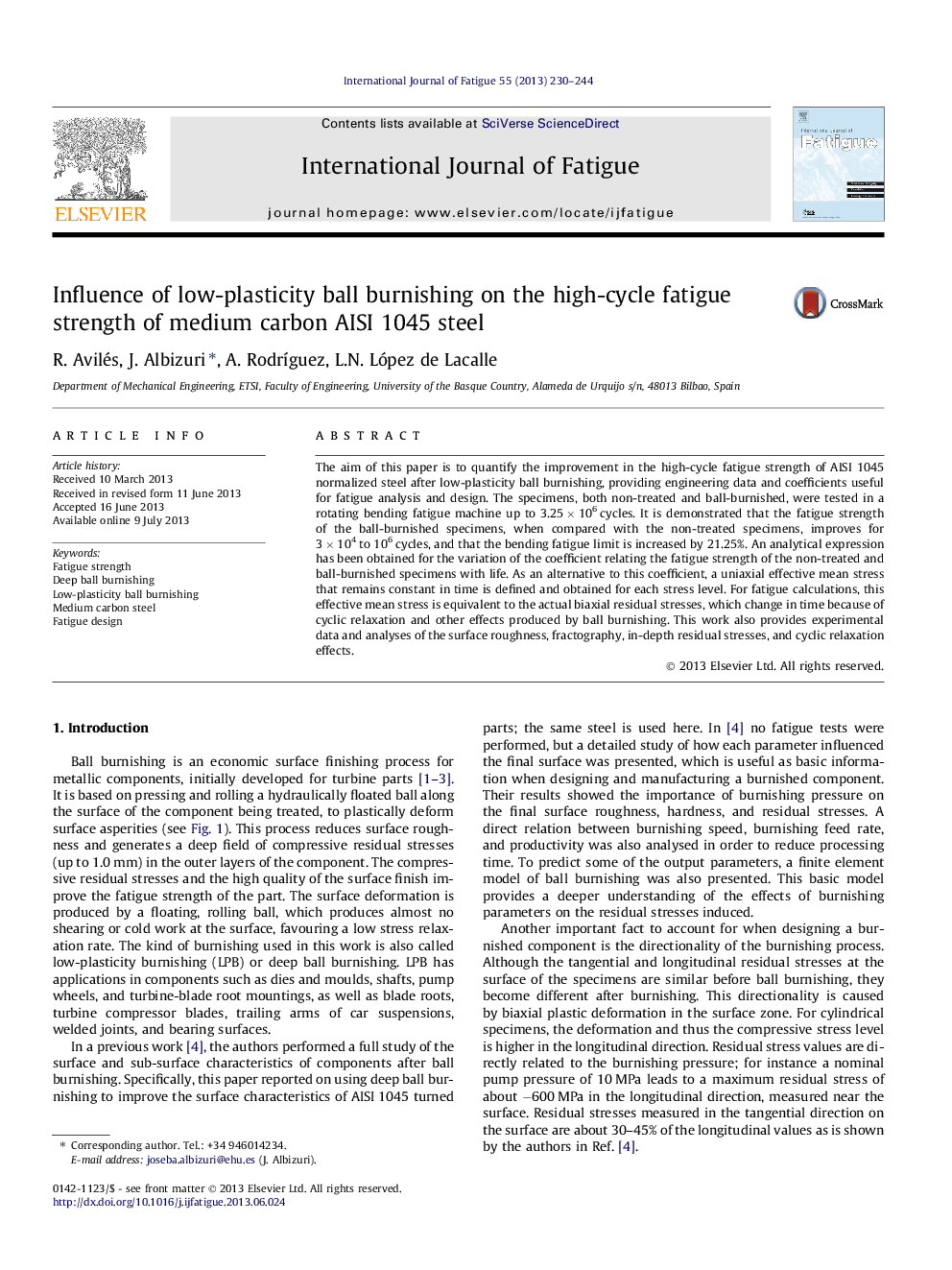| Article ID | Journal | Published Year | Pages | File Type |
|---|---|---|---|---|
| 776890 | International Journal of Fatigue | 2013 | 15 Pages |
•This paper deals with the influence of ball burnishing on the fatigue strength.•Fatigue strength is improved chiefly because of the residual stress.•The fatigue limit is increased in a 20%.•Quantitative data useful for design and analysis engineers have been obtained.•The original biaxial surface stress and two uniaxial equivalent states are analysed.
The aim of this paper is to quantify the improvement in the high-cycle fatigue strength of AISI 1045 normalized steel after low-plasticity ball burnishing, providing engineering data and coefficients useful for fatigue analysis and design. The specimens, both non-treated and ball-burnished, were tested in a rotating bending fatigue machine up to 3.25 × 106 cycles. It is demonstrated that the fatigue strength of the ball-burnished specimens, when compared with the non-treated specimens, improves for 3 × 104 to 106 cycles, and that the bending fatigue limit is increased by 21.25%. An analytical expression has been obtained for the variation of the coefficient relating the fatigue strength of the non-treated and ball-burnished specimens with life. As an alternative to this coefficient, a uniaxial effective mean stress that remains constant in time is defined and obtained for each stress level. For fatigue calculations, this effective mean stress is equivalent to the actual biaxial residual stresses, which change in time because of cyclic relaxation and other effects produced by ball burnishing. This work also provides experimental data and analyses of the surface roughness, fractography, in-depth residual stresses, and cyclic relaxation effects.
